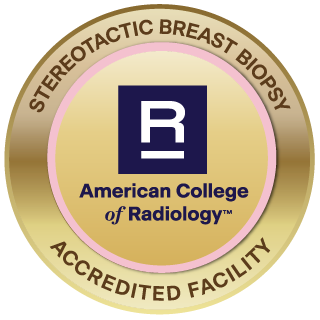Biopsies
GENERAL OVERVIEW ABOUT THE EXAMS
When an imaging test shows a mass and lesion, a biopsy is performed to determine if it is cancerous or benign. A biopsy is the process of collecting cells from the area under investigation so they can be studied under a microscope. Getting a biopsy was once generally performed using surgery, but advances in medicine have created image-guided needle biopsy techniques that are minimally-invasive and of low risk of complications.
Most biopsies turn out to be negative, but other problems like infection, internal injury and other diseases may account for masses, so it is important to get them checked. If cancer is present, biopsy can catch it early, before it has a chance to spread, while it is more easily treatable.
Quick Links & Info
Scheduling
For information about your appointment or to schedule a new one call (386) 274-6000.
Exam Preps
Be ready for your next appointment.
Our Providers
See a full listing of our providers and their bios.
Types of Biopsies
-
CT Guided Biopsy/Aspiration
-
Ultrasound Guided Biopsy
-
Stereotactic Needle Core Biopsy
What to Expect
Biopsy varies by imaging method used, but some elements are similar.
CT Guided Biopsy – This is a quick, painless imaging test, but depending on your case, contrast agent may be needed to enhance detail. Contrast is usually injected to highlight the area of interest. You will be positioned so that the CT imager can best capture images of the area being investigated.
Ultrasound Guided Biopsy – You will be positioned lying face up on the examination table or turned slightly to the side. While you lie still, your technologist will apply ultrasound gel and swipe a wand, called a transducer, back and forth over the skin to locate the abnormality.
Stereotactic Biopsy – Your technologist will position you face down on a specially designed table with your breast placed through an opening in the tabletop. Compression is used to secure the breast. The tabletop is then elevated so that your radiologist can collect a sample from beneath.
In all image-guided biopsy procedures, the skin over the aspiration area is cleansed and numbed with a local anesthetic. A small incision is made to accommodate the biopsy needle or device. Several samples are taken to ensure the most accurate diagnosis.
Once a sample is taken, sterile gauze and an ice pack are applied to the area to minimize swelling. Then a bandage is placed over the incision and after you are given instructions about home care, you are free to leave. Although not required, it is recommended that you have someone drive you to and from your appointment.
ACR Accredited in Stereotactic Breast Biopsy
Our facilities have been accredited by the American College of Radiology (ACR) for accuracy, safety and best practice standards in Stereotactic Breast Biopsy. For a complete listing of our accreditations per imaging center, please visit our Contact page.




